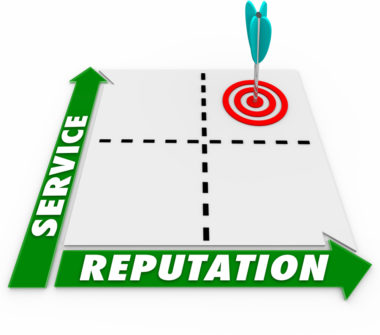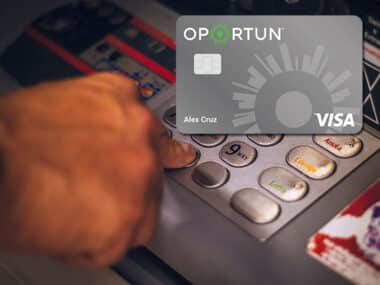A derogatory mark is one of the worst things you can find on your credit report. Many derogatory marks relate to cataclysmic financial events, such as repossession, foreclosure, or bankruptcy. However, you can also see an item on your credit report due to something as simple as a missed payment.
When you miss a payment on an account, that account becomes delinquent after 30 days. If left unaddressed long enough, the failed payment can be reported to the credit bureaus, creating a derogatory mark on your credit report in the process.
Left to fester, this can lower your credit score and become a red flag for potential lenders, landlords, and creditors to reconsider approving you for things like a loan or an apartment.
Delinquent accounts can show up on your report either due to a real failure to pay or an error by the credit bureau. In either case, it’s important to try to get the item removed from your credit report as soon as possible. Here are nine recommendations to help you do so.
Table of Contents
1. Check Your Credit Reports
The first thing you want to do is check your reports from all three of the major credit bureaus. You can request a free copy of each report once per year. Do so and then review each one carefully to ensure that all of your information is correct.
2. Look for Inaccuracies or Mistakes
As you review your credit reports, make a point to look for inaccuracies. The credit bureaus are merely reporting the information they have received. Additionally, each bureau works with its own distinctly different pool of data.
This means they can make a mistake as they go along. Common credit report mistakes include things like:
- Missing important information;
- Complications caused by a legal divorce;
- Including another individual’s information;
- Reporting identity theft activity as your own;
- Duplicating information.
Make sure all of the information on your report is correct — including the delinquent account. If a delinquent account is reported incorrectly, it can cause tremendous damage to your credit.
Even if you already know that you have a delinquent account, double-check to ensure that it has been reported correctly.
3. Dispute Any Errors With the Lender
If you find an error on your credit report as it relates to a delinquent account, you must take steps to remove it so it doesn’t continue to negatively impact your credit. For instance, you may have paid a bill but it was still reported as late.
If this is the case, you can start the removal process by disputing the error with the original lender. Contact the lender and point out the discrepancy. Try to do so via certified snail mail.
The lender will legally have 30 days to respond to you after receipt of your letter. If they agree with your request, they’ll need to inform the credit bureaus of the error. If they disagree with you, you’ll need to take the issue to the credit bureaus directly.
4. Dispute Any Errors With the Credit Bureaus
Another way to fix a mistake on your credit report is by filing a dispute with the credit bureau or bureaus that have reported incorrect information on your report. You can do this via email or phone, but drafting a dispute letter is, once again, recommended, as it leaves a paper trail.
Make sure to include proof of the error. Also, send the letter via certified mail to confirm that it was received. If the item is truly a mistake, this should resolve the issue.
5. Send a Goodwill Letter
If you find that the delinquency isn’t a mistake, you aren’t out of luck. You can still send a goodwill letter to the lender. While a dispute letter challenges incorrect information, a goodwill letter — also referred to as a forgiveness letter or a good-faith letter — simply explains your hardship or other difficulties in originally making the payment. It then requests the lender to proactively remove the mark from your report.
Since you’re asking the lender for a favor, you should always send a goodwill letter after you’ve resolved the outstanding debt. Once everything is paid up and your delinquent account is again in good standing, then you can send the letter asking for the item to be removed from your credit report.
6. Negotiate
If you can’t pay back the entire debt beforehand or you send the goodwill letter anyway and it fails, you may want to try negotiating the outstanding debt with the lender. In essence, this consists of offering ways to pay back the debt in exchange for having the delinquency removed.
A few examples of negotiation tactics include:
- Autopay: Sign up for an autopay plan;
- Payment plan: Create a newly agreed-upon payment plan;
- Partial payment: Settle on paying a portion of the original loan.
Never underestimate the power of negotiation with a lender. It often provides a win-win solution for both you and the creditor.
7. Follow Up
If you challenged an incorrect fact on your credit report and didn’t hear back from a lender or credit bureau, you will eventually want to follow up. Both have 30 days to respond after receiving your request.
As a final reminder, if you want to be able to do this, it’s wise to send your original request via certified mail. This will give you a hard-and-fast date when you know that the organization received your letter.
When the time comes, you can draft a follow-up letter that includes a copy of your original request as well as supporting documentation. You may even want to address the letter to someone higher in the organization in the hopes of getting noticed.
8. Get Help
The process of removing a delinquent account from your credit report can feel overwhelming. While it’s certainly something an individual can handle, if you don’t have the bandwidth to deal with the issue, you can always seek help from a credit repair company.
These organizations bring a wealth of knowledge and experience to the table. They will know the best course of action and can help you cut through the red tape.
If you go this route, though, avoid companies that promise over-hyped short-term results. Instead, make sure you work with a legitimate company with a good track record of experience and satisfied customers.
9. Be Patient
Finally, remember patience is key to the entire removal process. If you’re challenging a false delinquency mark on your report, it can still take weeks and even months to report the error, hear back from lenders or credit bureaus, and then see the changes implemented.
If you’re dealing with a real instance of delinquency, you may not be able to get it removed quickly. If that’s the case, you may have to wait for the derogatory mark to go away naturally. This typically happens after seven years, although the effect that it has on your credit lessens over that time.
Image Source: https://depositphotos.com/





